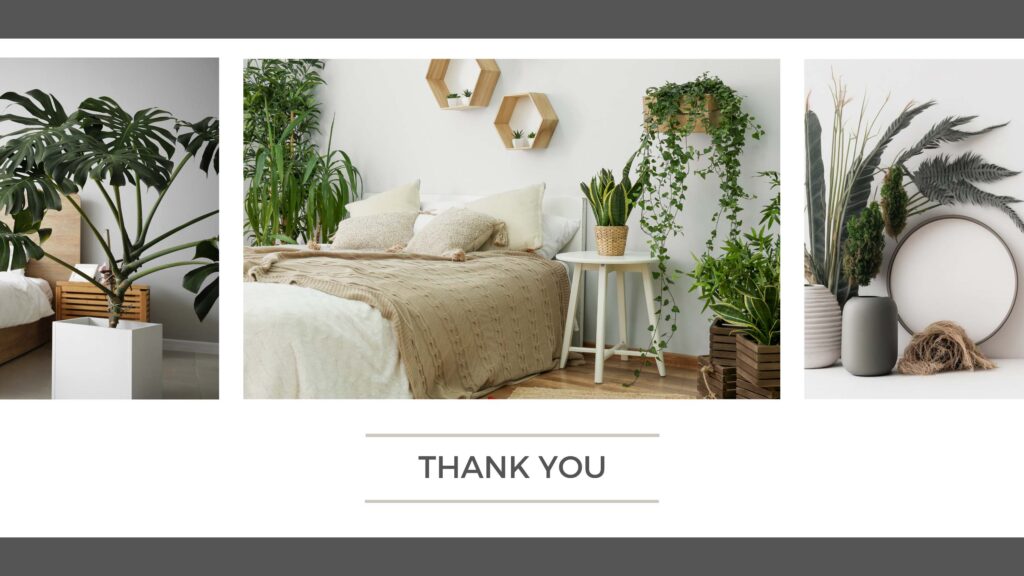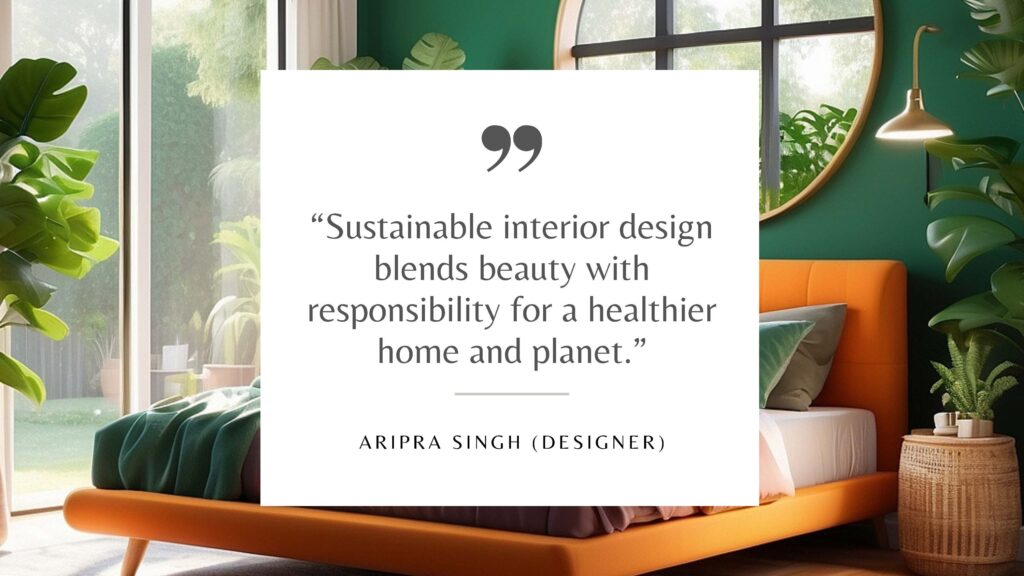
Table of Contents
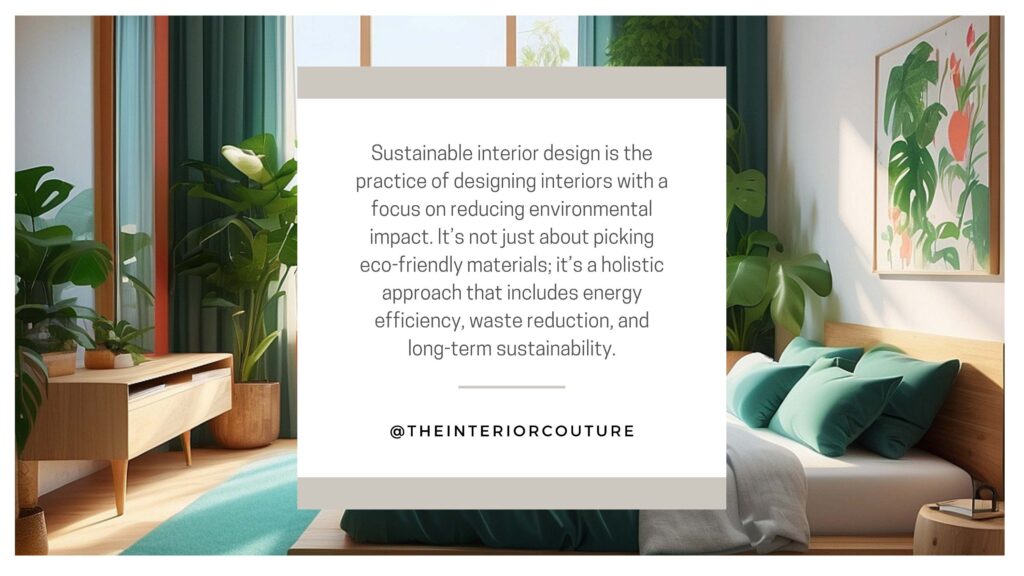
1. Introduction: What is Sustainable Interior Design?
When you think about interior design, the first things that probably come to mind are colors, furniture, and style. But have you ever considered how your choices impact the environment? Enter sustainable interior design—a growing trend that’s all about creating beautiful, functional spaces while also being kind to our planet.
Sustainable interior design is the practice of designing interiors with a focus on reducing environmental impact. It’s not just about picking eco-friendly materials; it’s a holistic approach that includes energy efficiency, waste reduction, and long-term sustainability. The good news? You don’t have to sacrifice style to go green. In fact, many eco-friendly options are as stylish as they are sustainable.
So, why is sustainable interior design important? Simply put, our planet’s resources are finite. By making mindful choices in your home’s design, you’re contributing to a healthier environment and setting an example for others to follow.
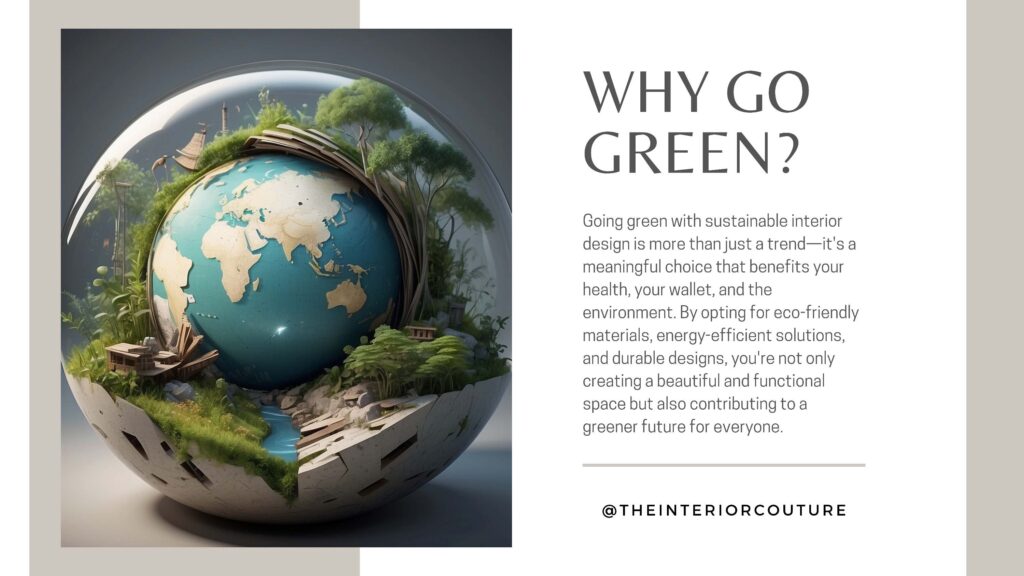
2. Why Go Green? The Benefits of Sustainable Interior Design
You might be wondering, “What’s in it for me?” The benefits of sustainable interior design go beyond just feeling good about helping the environment. Here are a few compelling reasons to embrace eco-friendly practices in your home:
– Healthier Living Spaces:
Sustainable materials often have fewer toxins, which means cleaner air and a healthier living environment for you and your family.
– Cost Savings:
While some sustainable options might have a higher upfront cost, they often save you money in the long run. Energy-efficient appliances and lighting reduce utility bills, and durable materials mean less frequent replacements.
– Enhanced Home Value:
Sustainable homes are increasingly in demand, which can boost your property’s resale value.
– Conscious Living:
Embracing sustainable design helps you live in a way that’s more aligned with your values, knowing you’re doing your part for the planet.
By now, you’re probably convinced that sustainable interior design is the way to go. But where do you start? Let’s dive into some practical steps you can take.
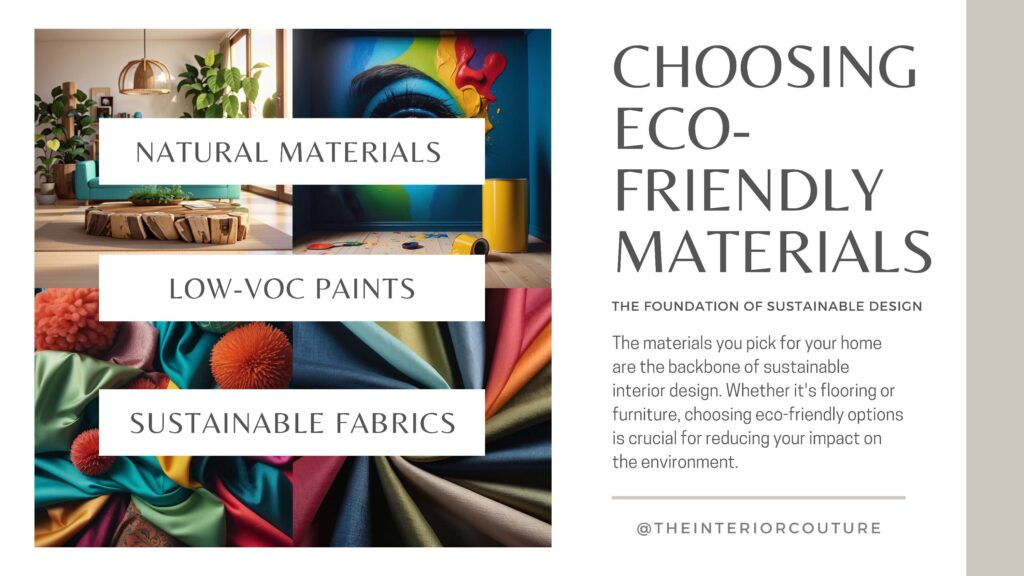
3. Choosing Eco-Friendly Materials: The Foundation of Sustainable Design
The materials you choose for your home are the foundation of sustainable interior design. From flooring to furniture, selecting eco-friendly options is key to minimizing your environmental footprint.
– Natural and Recycled Materials:
Look for materials that are either natural, like bamboo and cork, or recycled, such as reclaimed wood or recycled glass. These options are not only sustainable but also add unique character to your space.
– Low-VOC Paints and Finishes:
Volatile Organic Compounds (VOCs) are chemicals that can off-gas from paint and finishes, polluting indoor air. Choose low-VOC or zero-VOC products to keep your home’s air clean and healthy.
– Sustainable Fabrics:
Opt for fabrics made from natural fibers like organic cotton, linen, or hemp. These materials are not only eco-friendly but also durable and comfortable.
Transitioning to eco-friendly materials might seem daunting at first, but remember—it’s all about taking small steps. You don’t have to overhaul your entire home at once. Start with one room, or even just one element, and build from there.

4. Energy Efficiency: A Key Component of Sustainable Living
When we talk about sustainable interior design, energy efficiency is a crucial component. After all, how you use energy in your home has a direct impact on the environment. Fortunately, there are plenty of ways to make your home more energy-efficient without compromising on comfort or style.
– Lighting:
One of the easiest ways to reduce energy consumption is by switching to LED or CFL bulbs. These use a fraction of the energy compared to traditional incandescent bulbs and last much longer. Additionally, consider installing dimmer switches or using smart lighting systems to control your lights more efficiently.
– Appliances:
When it’s time to replace old appliances, look for those with the ENERGY STAR label. These appliances meet strict energy efficiency guidelines and can significantly reduce your energy bills.
– Insulation and Windows:
Proper insulation and energy-efficient windows can drastically cut down on heating and cooling costs. If you’re renovating, consider upgrading your insulation and installing double-pane windows to keep your home comfortable year-round.
Remember, even small changes can make a big difference. By making your home more energy-efficient, you’re not only reducing your carbon footprint but also saving money in the long run.
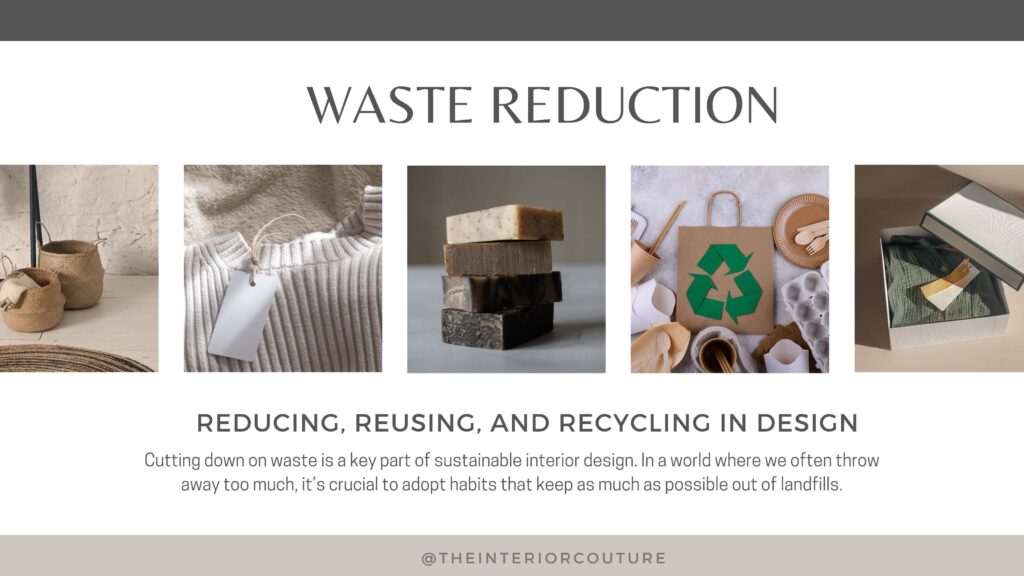
5. Waste Reduction: Reducing, Reusing, and Recycling in Design
Waste reduction is another critical aspect of sustainable interior design. In a world where consumerism often leads to excess waste, it’s important to adopt practices that minimize what ends up in landfills.
– Upcycling and Repurposing:
Before you buy new, consider whether you can upcycle or repurpose what you already have. For example, an old dresser can be transformed into a chic bathroom vanity, or vintage doors can be used as a unique headboard.
– Sustainable Furniture Choices:
When buying new furniture, look for pieces made from reclaimed or recycled materials. Also, consider buying second-hand furniture—vintage pieces often have a timeless appeal and a smaller environmental footprint.
– Recycling:
Set up a recycling system in your home to ensure that materials like paper, glass, and metal are properly disposed of. Additionally, consider composting organic waste, which can be used to enrich your garden.
By focusing on reducing, reusing, and recycling, you’re not only creating a more sustainable home but also contributing to a more sustainable world.
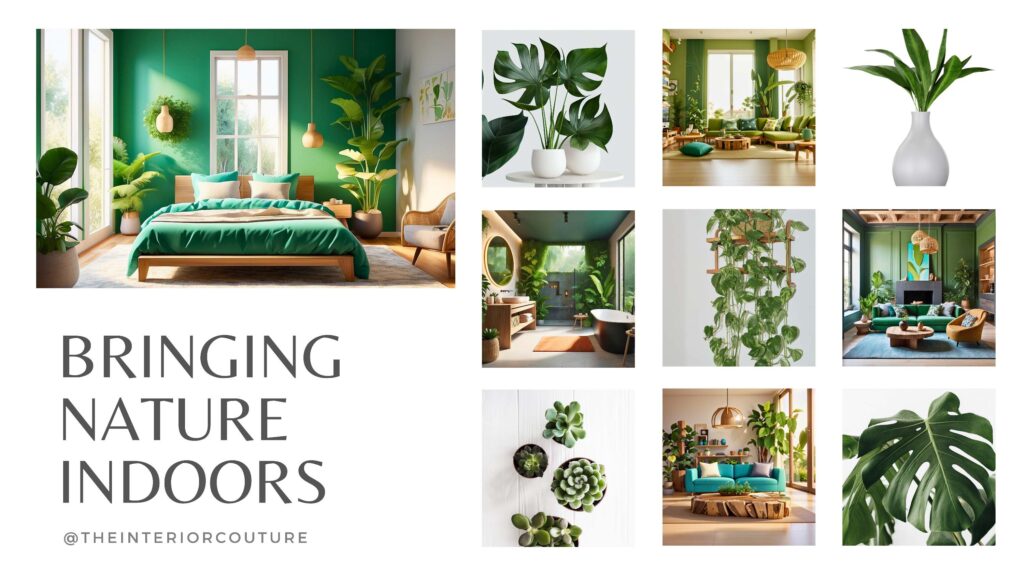
6. Bringing Nature Indoors: The Role of Biophilic Design
Biophilic design is all about bringing elements of nature into your home, and it’s a key trend in sustainable interior design. By incorporating natural elements, you can create a calming, rejuvenating space that connects you to the outdoors—even when you’re inside.
– Indoor Plants:
One of the easiest ways to embrace biophilic design is by adding indoor plants to your decor. Plants not only purify the air but also add life and color to your space. Choose low-maintenance plants like succulents, snake plants, or pothos if you’re new to plant care.
– Natural Light:
Maximize natural light by keeping windows unobstructed and using light, airy window treatments. Natural light reduces the need for artificial lighting, cutting down on energy use and creating a warm, inviting atmosphere.
– Natural Materials and Textures:
Incorporate natural materials like wood, stone, and wool into your design. These materials have a grounding effect and add a tactile quality that’s both comforting and aesthetically pleasing.
By embracing biophilic design, you’re not only enhancing your home’s sustainability but also creating a space that promotes well-being and a deeper connection to nature.
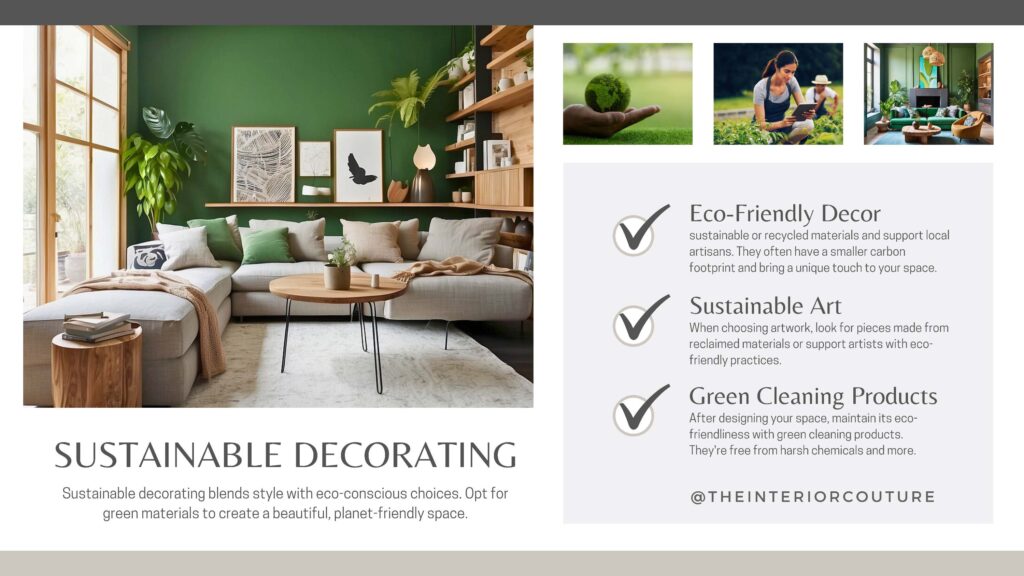
7. Sustainable Decorating: Eco-Friendly Finishing Touches
Finally, let’s talk about the finishing touches—those small but significant details that complete your design. Even here, you can make sustainable choices that contribute to an eco-friendly home.
– Eco-Friendly Decor:
Choose decor items made from sustainable or recycled materials. Look for handcrafted items from local artisans, which often have a smaller carbon footprint and add a unique, personal touch to your space.
– Sustainable Art:
When selecting artwork, consider pieces made from reclaimed materials or supporting artists who use eco-friendly practices. Alternatively, try your hand at DIY art projects using recycled or repurposed materials.
– Green Cleaning Products:
Once your space is designed, keep it eco-friendly by using green cleaning products. These products are free from harsh chemicals, making them safer for both the environment and your home.
Sustainable decorating doesn’t mean sacrificing style. On the contrary, it’s about making mindful choices that reflect your values while creating a beautiful, harmonious space.
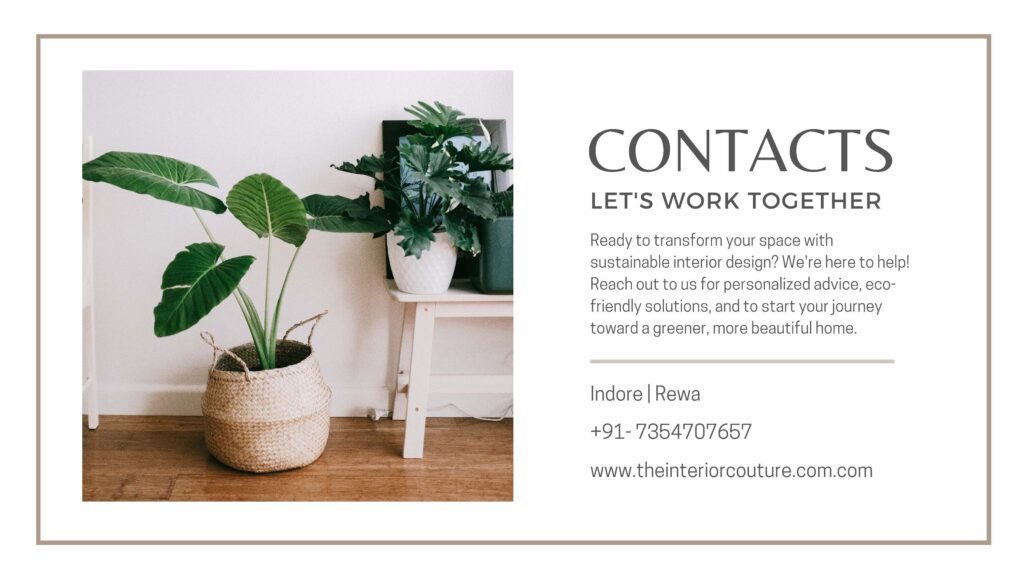
Conclusion: Start Your Sustainable Interior Design Journey Today
Sustainable interior design is more than just a trend—it’s a way of living that respects our planet and creates healthier, more meaningful spaces. Whether you’re just starting out or looking to take your eco-friendly practices to the next level, remember that every small step counts.
By choosing sustainable materials, improving energy efficiency, reducing waste, and embracing nature, you can create a home that’s not only beautiful but also aligned with your values. So why not start today? Your journey to a more sustainable, eco-friendly home is just beginning—and the possibilities are endless.
